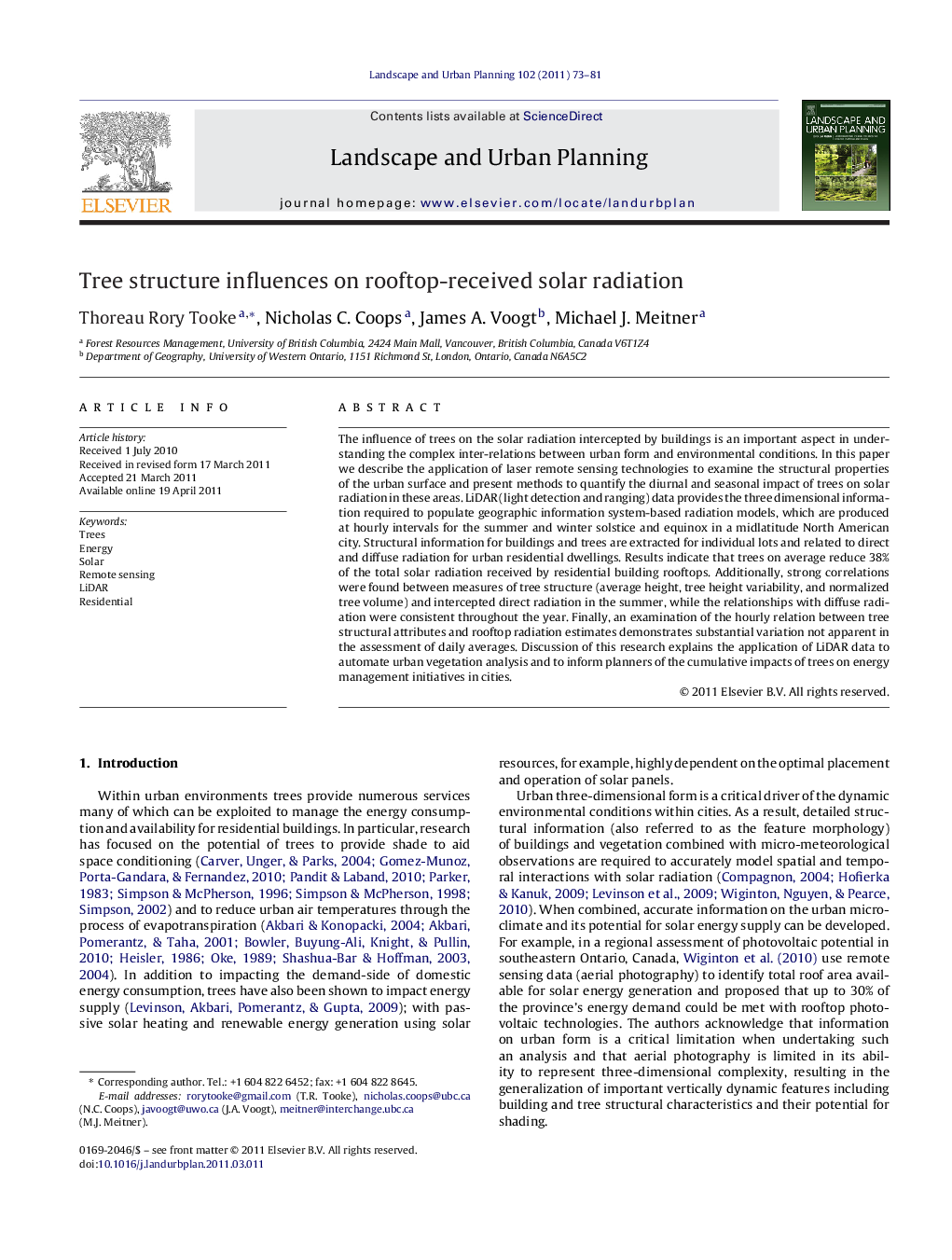| کد مقاله | کد نشریه | سال انتشار | مقاله انگلیسی | نسخه تمام متن |
|---|---|---|---|---|
| 1049765 | 945637 | 2011 | 9 صفحه PDF | دانلود رایگان |

The influence of trees on the solar radiation intercepted by buildings is an important aspect in understanding the complex inter-relations between urban form and environmental conditions. In this paper we describe the application of laser remote sensing technologies to examine the structural properties of the urban surface and present methods to quantify the diurnal and seasonal impact of trees on solar radiation in these areas. LiDAR (light detection and ranging) data provides the three dimensional information required to populate geographic information system-based radiation models, which are produced at hourly intervals for the summer and winter solstice and equinox in a midlatitude North American city. Structural information for buildings and trees are extracted for individual lots and related to direct and diffuse radiation for urban residential dwellings. Results indicate that trees on average reduce 38% of the total solar radiation received by residential building rooftops. Additionally, strong correlations were found between measures of tree structure (average height, tree height variability, and normalized tree volume) and intercepted direct radiation in the summer, while the relationships with diffuse radiation were consistent throughout the year. Finally, an examination of the hourly relation between tree structural attributes and rooftop radiation estimates demonstrates substantial variation not apparent in the assessment of daily averages. Discussion of this research explains the application of LiDAR data to automate urban vegetation analysis and to inform planners of the cumulative impacts of trees on energy management initiatives in cities.
► LiDAR (light detection and ranging) data provides an effective parameter for urban solar radiation models.
► Trees in the study area attenuate on average 38% of available solar radiation at building rooftops.
► Strong correlations exists between average tree height, tree height variability, normalized tree volume and estimates of direct and diffuse radiation received at building rooftops.
► Integrating atmospheric conditions into the solar radiation model impacts absolute values but not correlation between tree structure and radiation estimates.
Journal: Landscape and Urban Planning - Volume 102, Issue 2, 30 August 2011, Pages 73–81